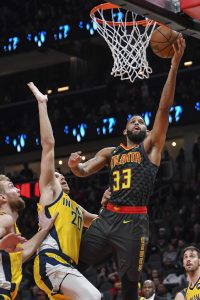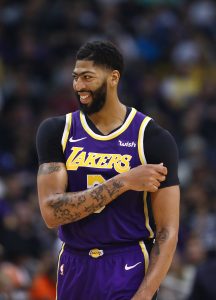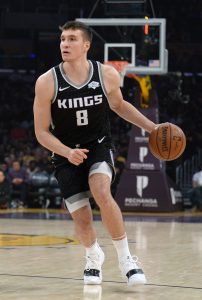We’re on the verge of flipping the calendar to 2020, but before we close the book on 2019, we want to take a look back at The Year That Was in the NBA.
The league crowned a new champion in 2019, as the Raptors won their first title in their 24th year of existence. Toronto made a memorable run to that championship, knocking out the Sixers in the Eastern Conference Semifinals with one of the most improbable buzzer-beaters in playoff history, then coming back from a 2-0 deficit in the Conference Finals vs. the Bucks before knocking off the defending-champion Warriors in the Finals.
Of course, the Warriors weren’t at full strength in those Finals. The respective Achilles and ACL tears suffered by Kevin Durant and Klay Thompson in that series not only paved the way for a Raptors’ victory — they also essentially ended Golden State’s dynasty. Six months later, Durant, Andre Iguodala, and Shaun Livingston are gone, Thompson and Stephen Curry are injured, and the Warriors are in the Western Conference basement.
While things took a turn for the Warriors this summer, it’s not as if their Finals opponents had a perfect offseason either. Kawhi Leonard became the first reigning NBA Finals MVP to leave his team in free agency, returning home to Los Angeles, where he and Paul George joined forces of members of the Clippers.
Leonard’s shocking free agent decision and the out-of-nowhere trade that sent George from the Thunder to the Clippers were among the highlights of one of the NBA’s most eventful offseasons ever. The summer also included Kyrie Irving and Durant teaming up for the Nets, as well as blockbuster trades sending Russell Westbrook to the Rockets and Anthony Davis to the Lakers. The AD trade was the culmination of a saga that began when Davis asked the Pelicans to trade him in January.
Although Davis eventually made his way to the Lakers, it happened after Magic Johnson had abruptly resigned from his position as the team’s president of basketball operations in the year’s most jarring impromptu press conferences. Not to be outdone, the Knicks held a surprise presser of their own several months later to announce, just 10 games into the 2019/20 season, that they weren’t happy with their team’s play. That James Dolan-mandated session may have been the beginning of the end for David Fizdale‘s tenure in New York.
A pair of the year’s biggest basketball stories originated in Asia. USA Basketball’s lengthy international winning streak was snapped at the 2019 World Cup in China, where Team USA had a disappointing showing and didn’t even make the medal round. Weeks later, Rockets GM Daryl Morey issued a brief tweet in support of Hong Kong protestors that kicked off an international firestorm between the NBA and China. That controversy has yet to be fully resolved and may have an impact on the league’s salary cap going forward.
While those were some of the top basketball stories of 2019, there are plenty of others worth mentioning. The league lost a pair of legends this spring when Dwyane Wade and Dirk Nowitzki officially retired. However, their longtime teams – the Heat and Mavericks – have been two of the NBA’s most pleasant surprises so far in 2019/20, led by Jimmy Butler and rising star Luka Doncic, whose emergence has been another one of the best stories of the year.
Giannis Antetokounmpo‘s ascension and his MVP battle with James Harden has been an ongoing source of entertainment. The Celtics‘ disappointing and drama-filled 2018/19 showing was a source of fascination. And the NBA’s desire to make major changes to its schedule has been a source of debate among fans.
With the year about to come to a close, we want to hear about your favorite NBA stories of the last 12 months. What will you remember most about the NBA in 2019 when you look back on it years from now?
Head to the comment section below to weigh in!

 Allen Crabbe
Allen Crabbe For a star like
For a star like 
